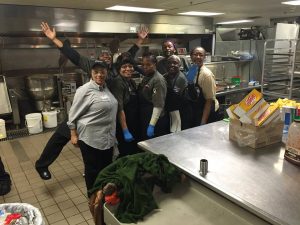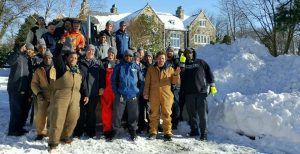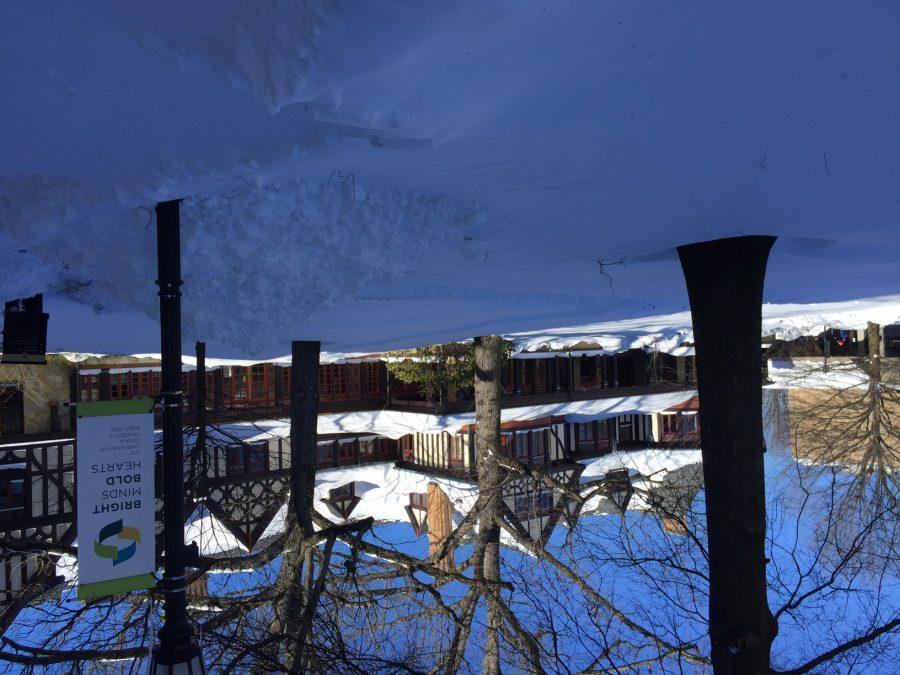Winter Storm Jonas barreled into the Baltimore region from Jan. 22 to Jan. 23, dropping 29.2 inches of snow in two days. Jonas took the crown as Baltimore’s biggest snowstorm on record, surpassing a record from another historic storm in February of 2003 by more than 2 inches. The storm crippled travel as roads were impassable, transportation was suspended and over 1,000 flights were cancelled at BWI from Friday to Monday afternoon.
As this historic blizzard passed through Baltimore, Loyola was directly affected by the record-breaking conditions. Classes were cancelled from Friday, Jan. 22 until Wednesday, Jan. 27 as many streets in the city were still partially uncleared. The 64th Annual Bull and Oyster Roast, one of Loyola’s biggest alumni events, was cancelled due to the storm but has since been rescheduled for April 30.
While students got to enjoy several snow days of sledding and Netflix, many other members of the Loyola community worked tirelessly around the clock to get the campus running again. Members of campus police, dining, facilities, emergency management and many other organizations dedicated their weekends and more to the Loyola community.
Loyola was able to effectively handle Winter Storm Jonas by following a Comprehensive Emergency Operations Plan (CEOP), an over 300-page document that details how to mitigate, prepare, respond and recover from an emergency on campus. The plan explains the main goals of emergency management, “The overall priorities of the university during an emergency or disaster are the protection of lives, property and the environment.”
Loyola’s Emergency Management Coordinator is Tom Hettleman, who has a background in environmental health and safety. Hettleman will be fully FEMA certified in the spring, and shared how he and his team addressed the biggest snowstorm to ever hit the region.
An 11-person team that covers all sectors of campus including academic affairs, housing and public safety, met before the storm to proactively plan. The team prepared Loyola for the storm by purchasing extra generators, readying emergency shelters, shuttling students to Giant Food to get supplies, and closing at noon on Friday to give the community time to get ready for the storm ahead. The emergency planning team was on call for the entirety of Jonas and in constant contact, and Hettleman cited their teamwork and communication as a key to their success.
Closing campus may seem like a relatively easy call in the face of impending weather conditions, but there is a long process that goes in to making this important decision. Loyola currently contracts with a company that offers specialized meteorologists who continually focus on the conditions surrounding the school, and has access to several city cameras to get a live feed of street conditions in the region. Hettleman is usually up at 3 a.m. the evening before a storm hits, and works with campus police as another resource to give an accurate assessment.
Even with this plethora of resources, Jonas was an unpredictable storm, as meteorologists called for high winds that could possibly down power lines and cause more issues. “You can’t plan for everything, but if you have the foundation in place you can get better at responding to emergencies,” Hettleman explained. The emergency management team’s response to Jonas kept campus operations moving smoothly, but Hettleman emphasized that he is truly thankful to dining services and facilities who stayed on campus throughout the worst of the storm.
Both Boulder and Iggy’s opened Sunday, Jan. 24, directly after the worst snowfall. Bill Zimnoch, Resident District Manager for Parkhurst Dining, explained that as essential personnel, dining services staff was prepared to take on their responsibility to provide students a necessary place to eat.
While Maryland was in a state of emergency and residents were urged not to travel, the dining services team still found ways to get to work. The staff rented a four-wheel vehicle to pick up team members across Baltimore and other staff members volunteered to go out and try to help.

Lou DeMaio, General Manager for Parkhurst Dining at Loyola, stated that Starbucks employees who didn’t have to come in made the trip anyway because they know how much students value their service. DeMaio also shared that Starbucks manager Gary Wright made upwards of 25 separate trips through the worst of the storm to help get personnel to Loyola so dining could be adequately staffed.
A handful of the staff decided to stay the whole weekend on-campus due to the severity of the storm, away from their families and the comforts of their own homes. The two head chefs stayed in the back offices of Iggy’s on Friday night, along with 11 other staff members. The number of staff staying on-campus continued to rise as the storm worsened, with personnel sleeping on air mattresses throughout McGuire and Iggy’s and showering in the visiting team locker room for the weekend.
Dining services dedication to serve gave students a chance
to get out of their apartments for a warm meal, but many wouldn’t have been able to leave their rooms without the diligence of the facilities department. The facilities team, along with several contractors, worked before, during and long after the storm to keep the campus clear and safe.

Director of Facilities Kiki Williams explained that much like the dining services staff, all members of the facilities team stayed on campus from Friday morning until Sunday night. The team slept on cots and mattresses throughout their plant building and used Boulder and Iggy’s to refuel throughout the weekend.
Williams’ team would get up around 6 a.m. every day and work three-hour shifts all day, constantly plowing, salting and hauling away the over two feet of snow. Several groundskeepers worked 24/7, salting walkways and especially focusing on roadways throughout campus so they could be passable for emergency vehicles.
The facilities department was able to get Loyola open quickly and efficiently as a “well-oiled machine” as Williams put it, with students missing only three days of classes instead of the full week that was missed during the “Snowmageddon” storm in 2010.

William’s expressed gratitude for the teamwork, flexibility and dedication of her staff who she said were motivated by the recognition they received. After Loyola posted a picture of the facilities team on Facebook, she shared it with her staff who were overwhelmed by the support, “It really meant a lot to them, and it was the boost they needed to keep going.”
Article photos courtesy of Loyola Dining and Loyola Maryland Facebook
Cover Photo:Katelyn Barone
















































































































